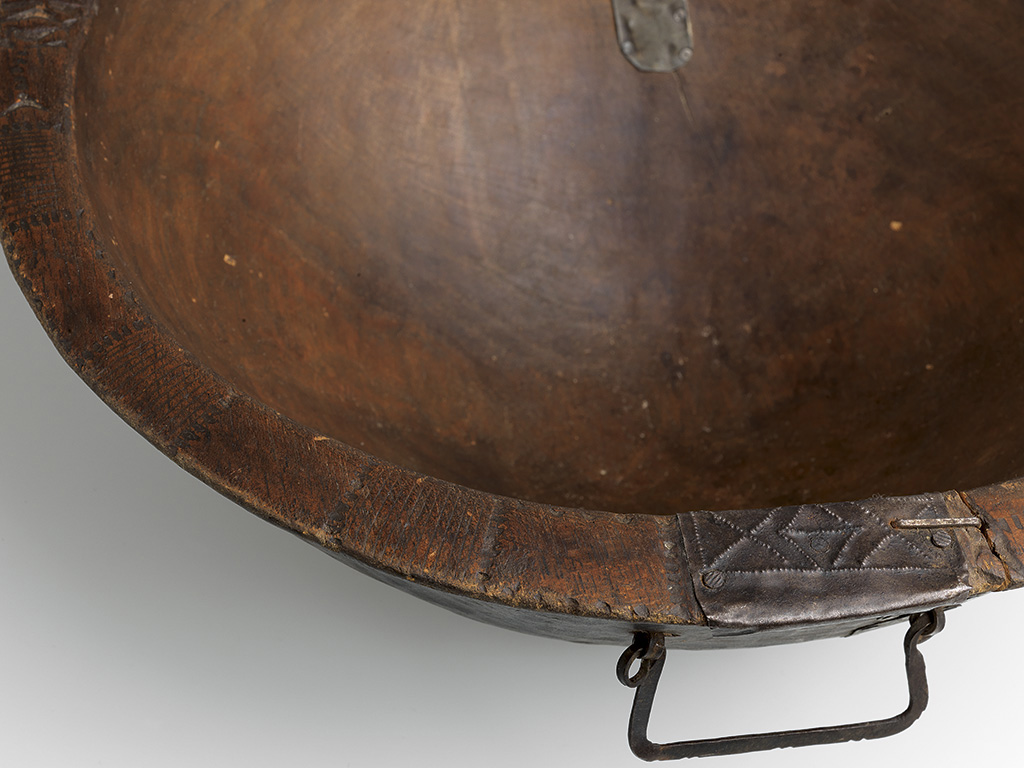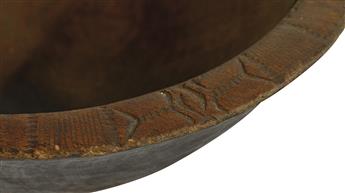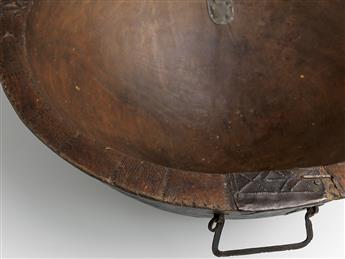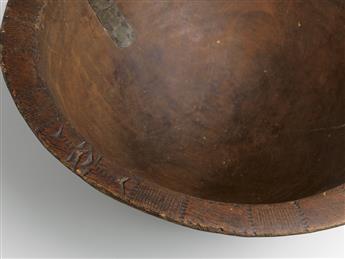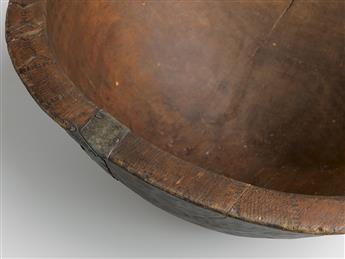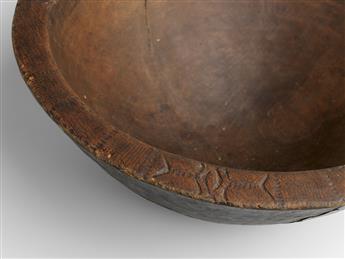Sale 2377 - Lot 35
Price Realized: $ 4,000
Price Realized: $ 5,000
?Final Price Realized includes Buyer’s Premium added to Hammer Price
Estimate: $ 5,000 - $ 7,500
SLAVE CULTURE. Antique American burl bowl, incised with African 'Adinka' designs along the lip. 16-1/2 inches in diameter with a wide 1-1/2 inch lip; two early tin patches; lovely old patina. Np, American South, late 18th to early 19th century
Additional Details
Adinka are visual symbols, originally created by the Akan people of Nigeria and the Gyaman of Cote d'Ivoire in West Africa, that represent concepts or aphorisms. The designs on this bowl most resemble the Adinka symbols 'Fawhodie,' signifying independence or freedom and 'Fihankra' (house or compound), signifying security and safety. Similar designs can be seen in Faik-Nzuji's 'Tracing Memory: A Glossary of Graphic Signs and Symbols in African Art and Culture' (Canadian Museum of Civilization, 1996). Adinka symbols can be found on many of the objects of material culture of West Africa, from fabrics and pottery even to the complex designs of ritual scarification. The influence of African design in general can be found in the material culture of the Southern United States of the 18th and 19th centuries and is well-documented in John Michael Vlach's 'Afro-American Tradition in Decorative Arts' (Cleveland Museum of Art, 1978). Provenance: one of two bowls from a private collector to the consignor, originally obtained from the now defunct Slave Relic Museum in South Carolina, obtained by them from a Mississippi plantation. Its companion was sold in these rooms in 2013 (sale 2308, lot 13).
Exhibition Hours
Exhibition Hours
Aliquam vulputate ornare congue. Vestibulum maximus, libero in placerat faucibus, risus nisl molestie massa, ut maximus metus lectus vel lorem.





